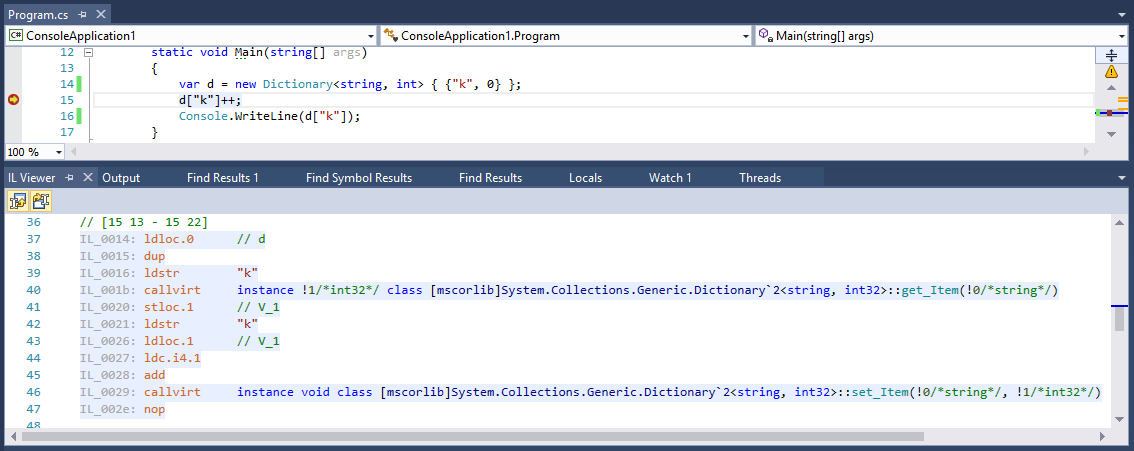scale-tone

Dictionary<> + operator++ == JavaScript object???
Consider the following JavaScript code:
var d = {"k": 0};
d["k"]++;
console.log(d["k"]); // 1
As expected, the output is 1. In JavaScript d[“k”] is equivalent to d.k, so the ++ operator is actually applied to the object’s field, it’s value changes and 1 is printed.
Now look at this C++ code:
std::map<std::string, int> d;
d["k"] = 0;
d["k"]++;
std::cout << d["k"]; // 1
As expected, the output is 1. The std::map’s operator[] actually returns a reference, which is then passed to operator++. So, the line
d["k"]++;
technically equals to
int& v = d["k"];
v++;
, and therefore 1 is printed.
Now let’s do the same in C#:
var d = new Dictionary<string, int> { {"k", 0} };
d["k"]++;
Console.WriteLine(d["k"]); // 1 But why???..
The output is 1 again! But you wouldn’t expect that, would you? As we all know, int is a value type, so the Dictionary’s indexer method is supposed to return a copy of the stored value. Which (the copy) would then be sent to operator++, and the original stored value (0) to be left intact. But this does not happen. Why?!…
The trick is being done by the compiler. For this specific line of code it “silently” adds a call to Dictionary<>.set_Item() method, which updates the stored value:
// [15 13 - 15 22]
IL_0014: ldloc.0 // d
IL_0015: dup
IL_0016: ldstr "k"
IL_001b: callvirt instance !1/*int32*/ class [mscorlib]System.Collections.Generic.Dictionary`2<string, int32>::get_Item(!0/*string*/)
IL_0020: stloc.1 // V_1
IL_0021: ldstr "k"
IL_0026: ldloc.1 // V_1
IL_0027: ldc.i4.1
IL_0028: add
IL_0029: callvirt instance void class [mscorlib]System.Collections.Generic.Dictionary`2<string, int32>::set_Item(!0/*string*/, !1/*int32*/)
IL_002e: nop
I believe, the creators of C# languate just didn’t want to disappoint developers with C++ and JavaScript background and decided to make this little “hack” at the compiler level.
The only tricky thing to remember about that small line of code is that it won’t be atomic a.k.a thread-safe. Even if you use ConcurrentDictionary<> instead of Dictionary<>.
After so many years C# still surprises me sometimes :)